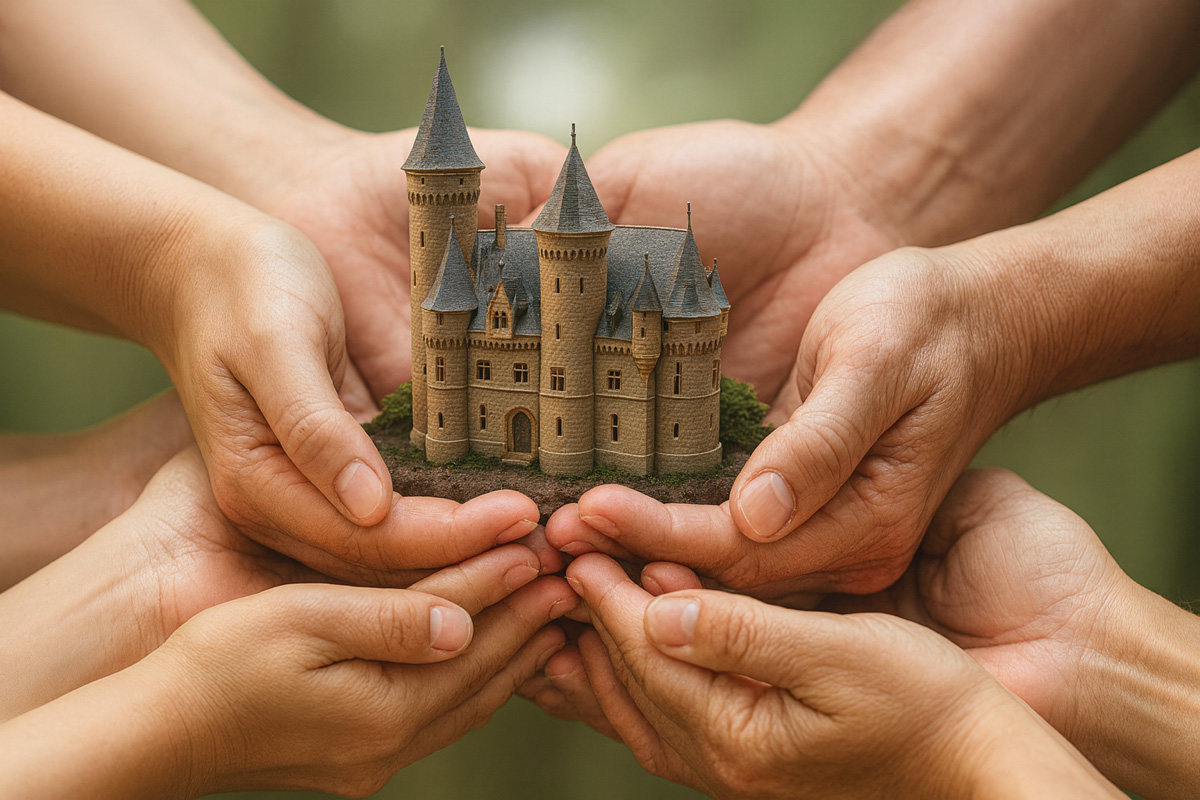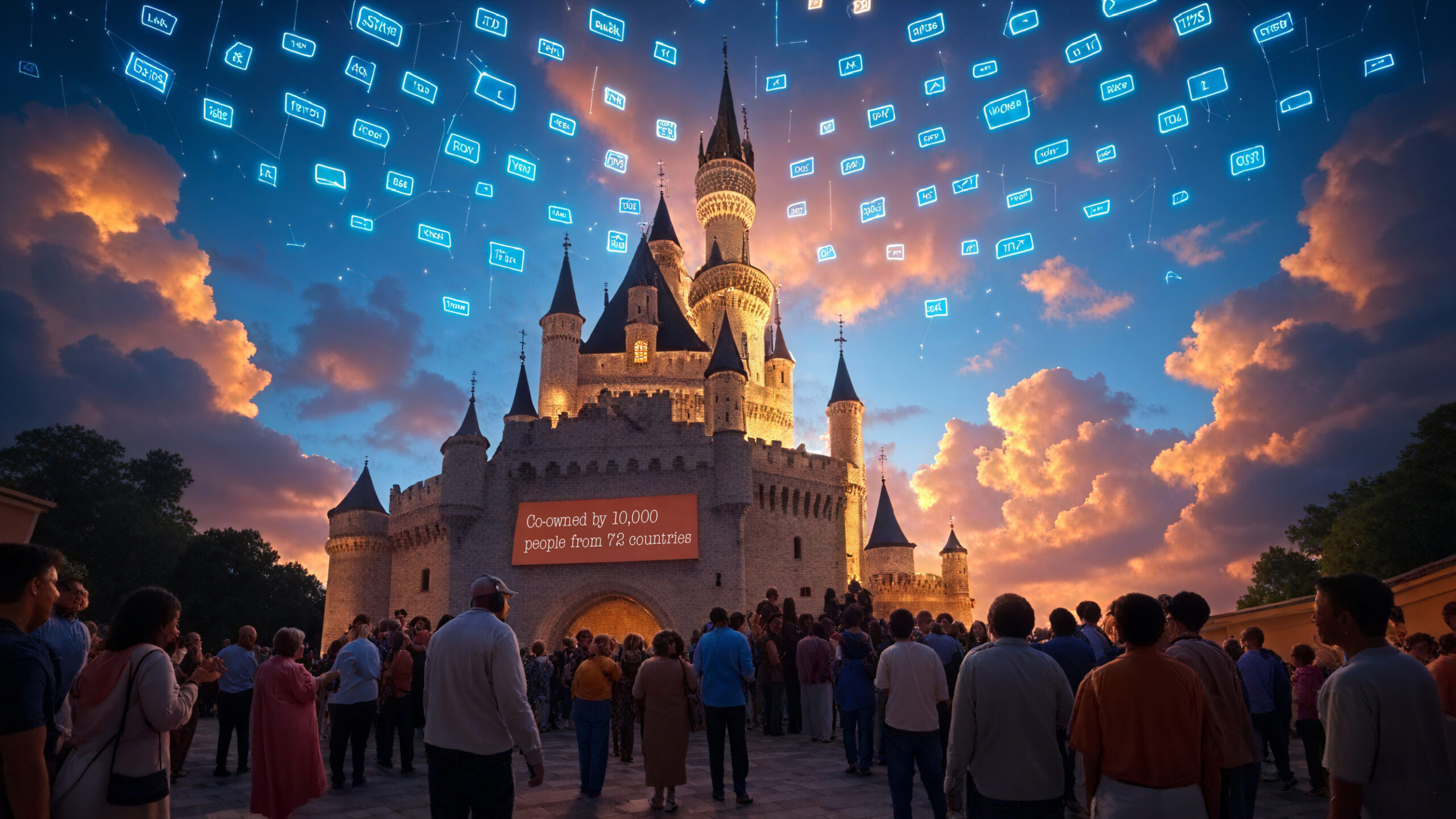A castle left to crumble is just a ruin. A castle owned by thousands through blockchain is a heartbeat, a community, a future.
If you have ever walked past an abandoned building, you know the feeling. The silence is heavy. The windows are broken. The walls sag under the weight of years. Once, laughter might have filled those halls. Once, music might have echoed through those chambers. But now only wind moves through the ruins.
Heritage, without care, dies this way. Piece by piece, year by year, until a story that belonged to all of us turns into rubble. And the tragedy is not only cultural. It is also economic. These forgotten walls could be hotels, retreats, schools, theaters. They could generate life and income, instead of dust and regret.
The world is filled with such places. Castles in Europe, villas in the Mediterranean, palaces in Asia, ranches in the Americas. Each one whispers a story. Each one could live again. And yet, most remain closed, hidden behind fences, waiting for the right billionaire to arrive.
But here is the twist of our time: the savior does not need to be a billionaire anymore. The saviors can be thousands of ordinary people with tokens in their wallets.
The Old Model of Heritage
For centuries, heritage was controlled by a small circle. Monarchs, nobles, governments, foundations. They decided what to preserve, what to restore, and what to abandon. The rest of us were invited to watch — to walk through as tourists, maybe buy a ticket, take a photograph, and leave.
It was passive. Detached. Heritage became a museum. Something to observe, not to belong to.
And yet, human beings are not wired only to observe. We are wired to belong. To own. To take care of things that are ours. When heritage is locked behind velvet ropes, it feels like history is something given to us by others — not something we have a stake in.
That is why most people glance at castles and monuments with admiration… and move on. Because admiration without ownership fades quickly.
The Moment of Revival
Now imagine the same castle, but tokenised.
Suddenly, it is not a ruin you admire from afar. It is a piece of your portfolio. A part of your story. A fraction you can show your children and say: “This, too, is ours.”
Every time a stone is replaced, every time a roof is repaired, every time a new hall opens, you feel it in your bones because your tokens connect you to it. You don’t just observe heritage. You revive it.
And because thousands share that feeling, the castle is no longer silent. It hums with life. Co-owners visit. Events are hosted. Courses are taught. Music returns to the halls. What was once forgotten becomes unforgettable again.
This is the magic of tokenisation. It takes what is crumbling and gives it new owners who care enough to breathe life into it.
From Nostalgia to Utility
Skeptics will say: heritage is beautiful, but it does not pay. But that is the mistake of the old model — treating castles as museums only.
Tokenisation reframes heritage as living assets. A castle can host weddings, retreats, conferences, film shoots. A villa can offer memberships, residencies, cultural programs. A palace can house both a museum and a digital twin in the metaverse, selling access to experiences online.
Utility is everywhere once you stop thinking of heritage as static. With enough imagination, forgotten walls turn into revenue streams. And because token holders participate in those revenues, the incentive is no longer charity. It is community-driven business.
Heritage stops being a nostalgic drain. It becomes an economic engine.
The Power of Belonging
But the real dividend is not just financial. It is emotional.

When you own a piece of heritage, you feel anchored. In a world of subscriptions and rentals, where everything disappears when you stop paying, a token tied to real stone and history feels eternal. It makes you part of a lineage, part of something bigger.
Imagine telling your friends: “Yes, I own a share of that castle.” Not because you are rich, but because tokenisation made it possible. Suddenly, history is not just for aristocrats and billionaires. It is for everyone.
That pride creates communities. Thousands of people, across countries and cultures, united by their shared stake in a landmark. They talk, they visit, they promote, they protect. The walls stand not because one foundation wrote a check, but because a thousand owners gave their attention.
This is why heritage tokenisation is not only finance. It is culture. It is identity. It is pride made liquid.
Why This Will Spread
Once you see it, you cannot unsee it. If tokenisation can bring a castle back to life, why not a vineyard? Why not a theater? Why not an ancient spa, a monastery, a lighthouse, a landmark hotel?
Every forgotten wall on earth is a potential shared wallet. Every abandoned property is a future RWA. Every ruin is a community waiting to happen.
Investors will be drawn not only by the potential returns, but by the magnetism of the story. The story that they are not just buying yield, but reviving beauty. The story that they are not just shareholders, but caretakers.
And when investors discover that heritage RWAs can generate both cashflow and culture, the demand will grow faster than anyone predicts.
The Generational Shift
There is another reason this revolution is inevitable: the hunger of a generation for ownership.
Today’s young people are locked out of homes, land, and property. They rent their music, their movies, even their knowledge. But they crave something real. Something they can hold, point to, and belong to.
Tokenised heritage gives them exactly that. A castle, a villa, a cultural site they can co-own. A piece of history they can touch. An asset that outlives them.
For them, this is not just an investment. It is dignity. It is legacy. It is proof that ownership can still belong to the many, not just the few.
The Future of Forgotten Walls
Picture it. Ten years from now, tourists stand in front of a once-abandoned landmark. But this time, the sign at the entrance doesn’t read “Funded by the Ministry of Culture” or “Restored by the Smith Family Foundation.”
It reads:
“Co-owned by 10,000 people from 72 countries.”
That is not a dream. That is the natural future of tokenisation.
Because a castle left to crumble is just a ruin. But a castle owned by thousands through blockchain is not just restored. It is reborn.
And when thousands of wallets align, forgotten walls become the foundation of a shared future.




